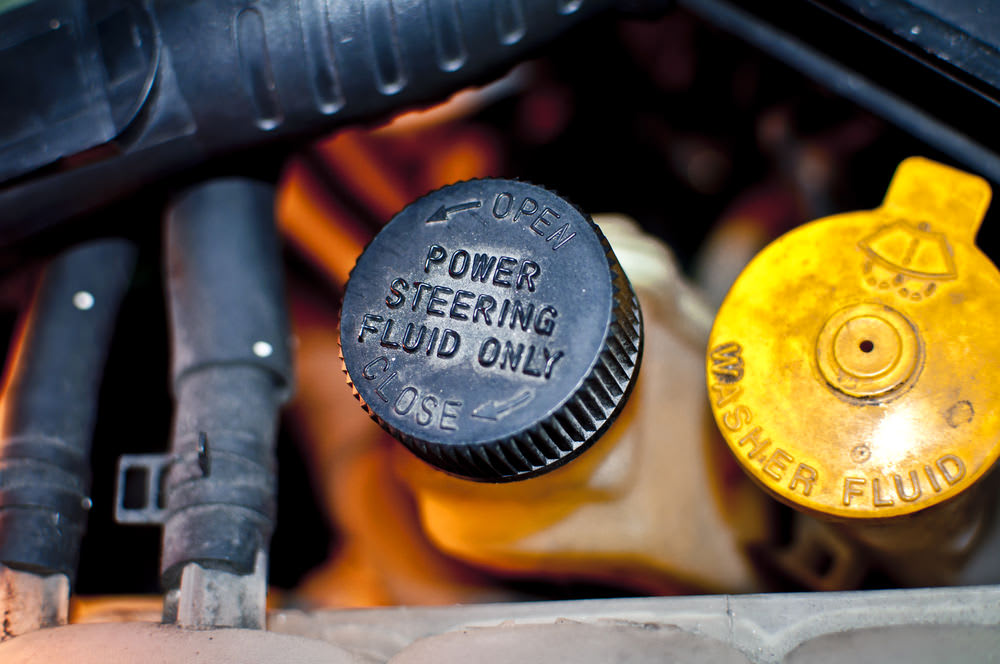

It’s usually better to fix an automotive problem early than to wait until it causes more damage or even an accident. And that general principle applies to the steering system. Luckily, periodic inspection and maintenance of the steering system is relatively straightforward.
To understand what maintenance is appropriate and how often it should be performed, it’s helpful to understand what parts compose a modern vehicle’s steering system:
Steering wheel and assembly: The steering wheel is the part most of us see. It consists of the steering wheel itself, plus a shaft that connects the steering wheel to the steering box
Steering “box”: The informal term steering box denotes the assembly that converts the circular motion of the steering wheel shaft into the side-to-side movement that will turn the car’s wheels. Several types of box are used; the most common are the recirculating ball and rack-and-pinion designs. The steering box is self-contained so the parts inside aren’t visible even if you look under the hood.
-
Power steering system: Most of today’s cars and almost all trucks and utility vehicles are equipped with power steering. About half of these systems are hydraulic, the other half electric.
- Vehicles with hydraulic power steering use a pump to raise the pressure of the power steering fluid, some means to power that pump (usually a belt), and a system of valves and tubes that direct the high-pressure fluid to the steering box.
- Vehicles with electric power steering don’t have a pump or fluid lines, but instead feature electric actuators (motors) incorporated into the steering box.
Tie rods and associated parts: A tie rod (along with some other metal rods whose names depend on the type of steering box) connects the steering box to each wheel assembly and transmits the turning force from the box to the wheel. Because the wheel needs to travel up and down as the vehicle rides over bumps, and also to accommodate changes in wheel alignment, the tie rod is attached at each end with a flexible joint. This joint, called a tie rod end, tends to wear out before other parts of the steering system.
Steering knuckle: The steering knuckle is the actual pivot around which the vehicle’s wheels turns. Each knuckle is attached to the vehicle using one or two ball joints.
While any of these parts can wear out, only a few need regular inspection and maintenance. Specifically:
Tie rod end inspection: Each tie rod end is a joint that has to move every time the vehicle hits a bump or dip and every time it turns — that’s a lot of movement, and the ends do wear out. Because a failed tie rod end is so serious (suddenly the car won’t steer at all) it’s important to check them for looseness or damage fairly often — typically every oil change and every alignment. Also, after any accident involving the front suspension, the entire steering assembly, especially the tie rods, should be checked. If a tie rod is loose you should have it replaced immediately, as a loose end is a safety hazard.
Ball joint inspection: Like the tie rod ends, the ball joints are joints that move almost every time the car does so they tend to wear out over time. Inspection is as with the tie rod ends: checking for looseness or damage. And as with tie rods, ball joints should be inspected at every oil change or alignment and after any serious accident.
Tie rod and ball joint lubrication: A generation ago, tie rod ends and ball joints had to be lubricated with grease on a regular basis, and if your vehicle has such joints it is critical that you follow the manufacturer’s recommended schedule for such lubrication. However, most cars and trucks today feature sealed tie rod ends and ball joints — not only don’t you need to worry about lubing them, it’s not even possible.
Power steering fluid inspection: At every oil change, your mechanic should check the level of the power steering fluid if you have a hydraulic power steering system. If the fluid level is low, add more as needed.
Power steering fluid change: Some hydraulic power steering systems need to have their fluid changed periodically (sometimes every two years or 30,000 miles), but not all do; check your owner’s manual.
Belt inspection: If your power steering pump is belt-driven, there may be a dedicated drive belt for it or it may be powered by the vehicle’s “serpentine” belt; either way, your mechanic should check the belt for looseness at every oil change.
General system inspection: The entire steering system should be checked every year or so for leaks (in hydraulic power steering systems) or looseness. Eventually the steering box will wear out and need replacement, but this may not happen until the car has covered 100,000 miles or more.
Remember, any time a vehicle is in an accident involving the front wheels or suspension, it’s very important to have the steering system checked for damage. You should also have the system checked if you notice a change in the vehicle’s steering, or if the steering wheel feels loose or starts to shake or move on its own.
The list above may look daunting but the good news is that all of the inspections listed above are part of the typical full-service oil change (and all but the fluid and belt check are part of a wheel alignment service), so you shouldn’t have to worry about them as long as you’re having the oil changed by a qualified mechanic at least every 5,000 miles. If your owner’s manual specifies a much longer oil change interval, which is true for a few cars using specialized synthetic oil, consult the manual for a schedule for steering system inspection and maintenance.



